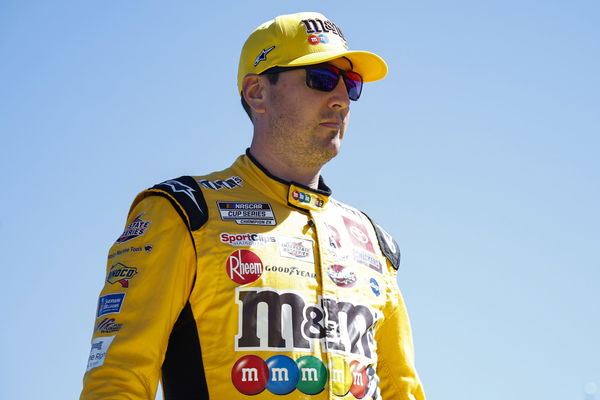
via Getty
TALLADEGA, ALABAMA – OCTOBER 02: Kyle Busch, driver of the #18 M&M’s Toyota, walks onstage during driver intros prior to the NASCAR Cup Series YellaWood 500 at Talladega Superspeedway on October 02, 2022 in Talladega, Alabama. (Photo by Chris Graythen/Getty Images)

via Getty
TALLADEGA, ALABAMA – OCTOBER 02: Kyle Busch, driver of the #18 M&M’s Toyota, walks onstage during driver intros prior to the NASCAR Cup Series YellaWood 500 at Talladega Superspeedway on October 02, 2022 in Talladega, Alabama. (Photo by Chris Graythen/Getty Images)
The whole Kyle Busch fiasco left a two-time cup series champion without a seat for 2023. Fortunately, he found a place for himself in Richard Childress Racing for the next year, leaving JGR after 15 long years. But he was forced to take his leave after his sponsor, Mars Inc. announced his departure. Fascinatingly enough, this whole saga brought a new, darker side of NASCAR to light.
A side that you wouldn’t expect from a business.
ADVERTISEMENT
Article continues below this ad
It’s no surprise that motorsports rely on sponsorship money to ensure their cars make it to races. But what is actually a surprise is the fact that NASCAR teams specifically rely on sponsor money to pay for 60-80 percent of all expenses. That explains why a team as big as Joe Gibbs Racing had to let one of the best drivers in the entire sport go because his primary sponsor departed the sport.
Naturally, with so much dependence on sponsors, teams asked for change and NASCAR had some solutions for the matter. But, it wasn’t exactly the ideal thing too. Now, the teams asked for a higher share of TV Revenue, which they delivered but not how the teams would have liked.
Unfortunately, the revenue NASCAR gave only increased marginally. On the other hand, they made the next-gen car to cut costs.
Teams were not happy with this move, though.
“I don’t know of another sports league — or business, for that matter — who came to prosperity through cutting,” Alpern said. “ That’s a fact. They don’t go together.”
“You get to a solution by investing in your content,” Polk said. “We are the content — the teams, the drivers, the cars. That’s what people are paying for — to see us. You don’t make the sport better by trying to cheapen the content.”
It’s not the cheaper costs the teams want, but more profits. Moreover, the next-gen car cost cut is not exactly making a big difference, either.
If the Next-Gen car helped teams cut costs, why did JGR let Kyle Busch go?
The Next-Gen car came with a lot of promises. But so far it only seems to have delivered concussions to the drivers.

via Getty
DARLINGTON, SOUTH CAROLINA – SEPTEMBER 04: Kyle Busch, driver of the #18 M&M’s Toyota, walks onstage during driver intros prior to the NASCAR Cup Series Cook Out Southern 500 at Darlington Raceway on September 04, 2022 in Darlington, South Carolina. (Photo by Logan Riely/Getty Images)
Of course, with single-source components compulsory to all cars, with only a maximum of 7 cars per team, you’d expect some serious cost-cutting. However, it seems to have been a farce, according to Toyota Racing CRO, David Wilson, at least.
ADVERTISEMENT
Article continues below this ad
WATCH THIS STORY: Kyle Busch Trash Talks His 7-Year-Old Son After His Prophecy Came Untrue
Wilson said, “The notion that 2022 will bring savings is false, this car undoubtedly will need to be massaged, it won’t be perfect coming out of the gates, nothing ever is”
ADVERTISEMENT
Article continues below this ad
But there’s light at the end of the tunnel, “So there is an investment up front, but by nature of the standardization of most of the car, there will be significant savings in the long term.”
But do you think the next-gen car will really account for serious cost-cutting later? Let us know in the comments.
ADVERTISEMENT
ADVERTISEMENT
ADVERTISEMENT
ADVERTISEMENT

